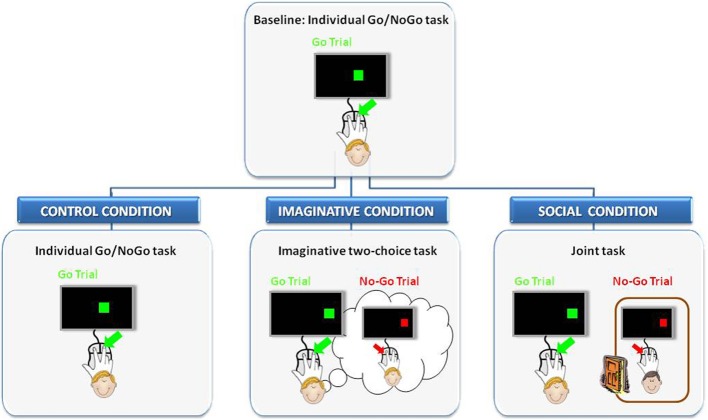Figure 1.
Schematic representation of the experimental design adopted in Experiment 1. Participants were randomly assigned to one of three experimental conditions: control, imaginative or social. Each experimental condition comprised two tasks (i.e., the baseline individual task and the critical task). Participants assigned to the control condition, after completed the baseline, simply continued to perform the same Go/NoGo task individually. Participants assigned to the imaginative condition, once completed the baseline, performed a task requiring them to imagine responding to the complementary color. In contrast, participants assigned to the social condition, after the baseline, were required to perform the same Go/NoGo task with an alleged co-actor who was in a non-specified room and was thought to respond to the complementary color.

